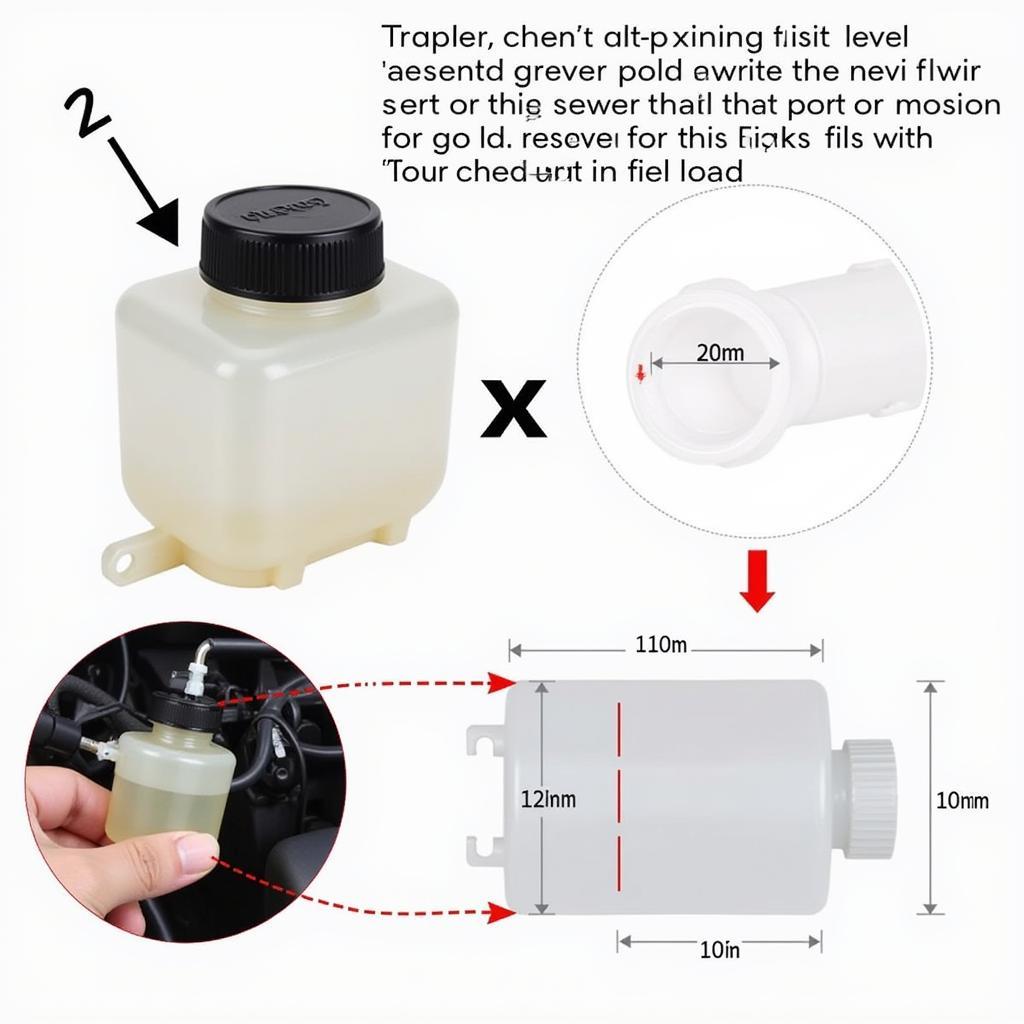A light or spongy brake pedal can be a nerve-wracking experience, signaling potential problems with your car’s braking system. Understanding the causes and solutions can help you address this issue effectively. This comprehensive guide will walk you through diagnosing and fixing a light car brake pedal, providing valuable insights for car owners, mechanics, and automotive technicians. Let’s dive in and explore the intricacies of this critical car component. If you’re looking for ways to improve your daily driver, check out cars to fix up for daiy driver.
Understanding the Causes of a Light Brake Pedal
A light brake pedal often indicates a loss of hydraulic pressure within the braking system. This can stem from several issues, ranging from simple fixes to more complex problems requiring professional attention.
Low Brake Fluid Level
One of the most common culprits is a low brake fluid level. As brake pads wear down, the fluid level naturally drops. However, a significantly low level can suggest a leak somewhere in the system.
Air in the Brake Lines
Air trapped within the brake lines can compress, leading to a spongy pedal feel. This often occurs after brake work, such as replacing brake pads or calipers.
Worn Brake Components
Worn brake components, like calipers, rotors, or drums, can also contribute to a light brake pedal. These components play a vital role in applying the necessary pressure to stop the vehicle.
Leaky Master Cylinder
The master cylinder is the heart of the braking system, responsible for generating hydraulic pressure. A leak in the master cylinder can drastically reduce braking power and result in a light pedal.
Faulty Brake Booster
The brake booster assists the driver in applying the brakes, reducing the effort required. A malfunctioning booster can manifest as a light or hard brake pedal.
 Checking Brake Fluid Level
Checking Brake Fluid Level
Diagnosing the Problem: A Step-by-Step Guide
- Check the brake fluid level. If it’s low, top it off and monitor for further drops, which could indicate a leak.
- Inspect the brake lines for leaks. Look for signs of fluid around the brake lines, calipers, and master cylinder.
- Check for worn brake pads. If they’re excessively thin, they need replacement.
- Test the brake booster. Listen for hissing sounds or unusual pedal feel.
- Inspect the master cylinder. Look for leaks or signs of damage.
Fixing a Light Brake Pedal: DIY vs. Professional Help
Some fixes, like topping off brake fluid, are simple DIY tasks. However, more complex issues, such as bleeding the brakes or replacing components, often require professional expertise. Do you need help fixing your car? Learn more at help me get my car fix.
Bleeding the Brakes
Bleeding the brakes involves removing air from the brake lines, restoring proper hydraulic pressure. This process requires specialized tools and knowledge.
Replacing Brake Components
Replacing worn brake components, like pads, calipers, or rotors, requires mechanical skills and proper tools.
“A light brake pedal is never something to ignore,” warns John Smith, a certified automotive technician with 20 years of experience. “It’s a critical safety issue that needs immediate attention.”
Preventing Future Problems
Regular brake inspections, including checking fluid levels and pad thickness, can help prevent light brake pedal issues and ensure optimal braking performance. Don’t forget to learn more about fixing car brake noise at fix break noise car.
“Preventive maintenance is key,” advises Sarah Jones, a lead mechanic at a reputable auto repair shop. “Regular brake checks can save you from costly repairs down the road.”
Conclusion
Can You Fix A Light Car Brake Pedal? Yes, in many cases. However, understanding the root cause is crucial. While some fixes are straightforward, others require professional intervention. Never ignore a light brake pedal, as it directly impacts your safety. If you have any doubts, seek professional help immediately. For more insightful tips and guides, visit guys car girls car fixed. You can contact AutoTipPro at +1 (641) 206-8880 or visit our office at 500 N St Mary’s St, San Antonio, TX 78205, United States.
FAQ
- What does a light brake pedal feel like? It feels spongy or requires more pressure than usual to engage the brakes.
- Is it safe to drive with a light brake pedal? No, it’s not safe and can significantly increase your stopping distance.
- How often should I check my brake fluid level? Check it at least once a month and before any long trips.
- How much does it cost to fix a light brake pedal? The cost varies depending on the underlying cause, ranging from a few dollars for brake fluid to several hundred for component replacement.
- Can I bleed my brakes myself? Yes, but it requires some mechanical knowledge and the right tools. If unsure, consult a professional.
- How can I prevent future brake problems? Regular brake inspections and maintenance are essential for preventing future issues.
- What are the signs of a bad brake booster? A hissing sound, a hard brake pedal, or reduced braking assistance are common signs. If you’re looking for tips on car fix tycoon, you can find them here: car fix tycoon tips.







Leave a Reply